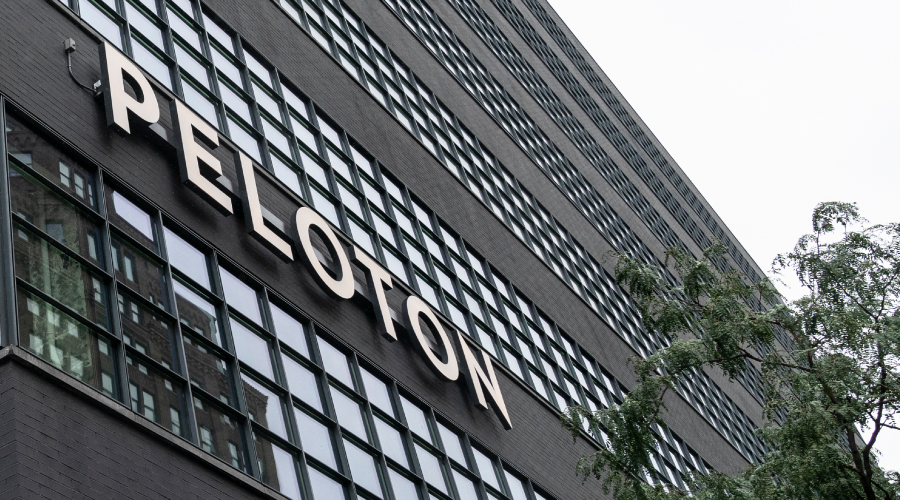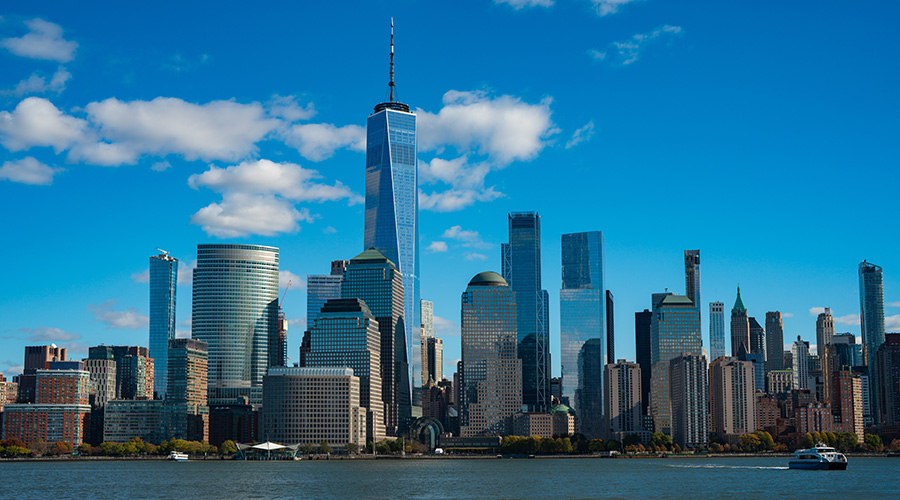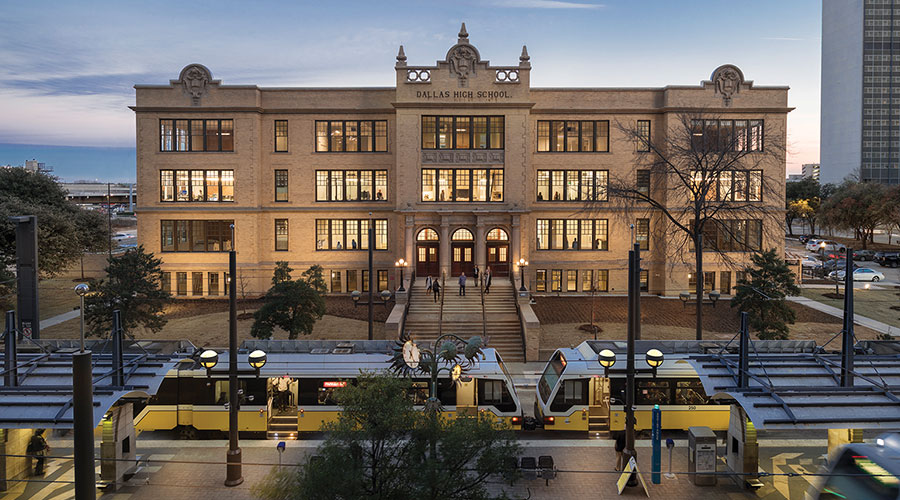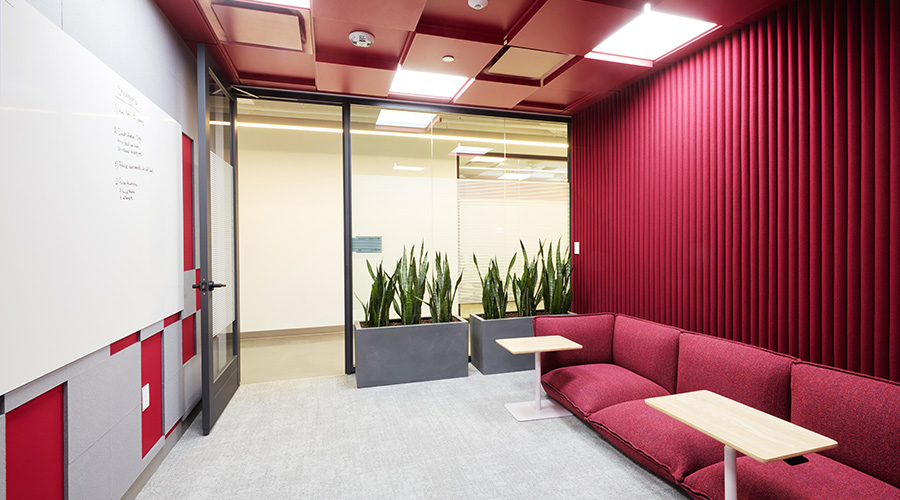Peloton Puts Health of Employees First at New Headquarters
Peloton makes healthier workspaces a priority for employees at its NYC headquarters.
By Dave Lubach, managing editor
Building occupants were already seeking to improve the workplace experience before the COVID-19 pandemic started. The events of March 2020 only escalated the process.
Before indoor air quality became a common term, employers were already offering healthier food options, workout areas, and outdoor work spaces. For facilities in urban areas, designers and planners highlighted public transportation plans to make employees’ lives easier.
Certification programs such as Fitwel help facility managers and building owners in institutional and commercial facilities achieve these goals of making workspaces healthier. Originally launched by the U.S. Centers for Disease Control and Prevention and the U.S. General Services Administration, Fitwel has certified buildings all over the world with the goal of improving the health and wellness atmosphere for occupants.
“Wellness in general has become such a strong focus,” says Kary Huslig, the director of workplace strategy and change management for PDR, a design and architecture firm. “Hygiene and overall cleanliness are top of mind, but it’s also around the idea of holistic wellness. I see companies focusing on that more than ever before.”
In March 2020, as a global pandemic settled in, establishing a health and wellness plan for buildings was never more critical. Workout giant Peloton understood this as it was set to open a new headquarters in the heart of Manhattan in September 2021.
Interesting timing
Eighteen months into the pandemic, many companies still had non-essential employees working from home when Peloton opened its new headquarters. Millions of square feet of office space in Manhattan and around the country continued to sit mostly empty as employers pondered when (or if?) they would ever bring workers back.
Even before the pandemic, Peloton was generous regarding employees working from home. Manhattan can be a challenging place to work for commuters, as many people rely on public transportation to get to the office during normal times. The threat of picking up a contagious disease when riding a bus or subway lingered around every corner.
“The company tends to be very empathetic at its core, so we always wanted that flexibility,” says Director of Workplace Operations Danny Santiago about flexible work.
Peloton’s employees were spread between two separate offices in New York City when the pandemic started. In June 2020, during the early stages of the pandemic, Santiago could count on one hand the number of people who actually came into the office.
“We had about 4-5 people and we opened it for people that were having adverse conditions at home – terrible WiFi, lived in a studio, something like that,” he says.
But as the pandemic raged on, Peloton’s business expanded as more and more people relied on exercising at home. Peloton’s surge in sales resulted in the need for a bigger headquarters. It ultimately decided on an eight-floor space consisting of 350,000 square feet at 441 Ninth Ave. in Manhattan.
“Our original offices, especially on 25th Street, they were all stand/sit up desks in clusters,” Santiago says. “It wasn’t your kind of typical office with all the cubicles, it was just sit and standup desks, and you had some conference rooms which was good for the size of the company we had at the time. But once we did that rapid growth in 2020 and 2021, it wasn’t going to fit the needs.”
Two departments experiencing space needs were the development and photography teams, who were still mostly still coming to the office. Members of both teams got creative to get tasks completed.
“For example, the photo team was going to Brooklyn to do photo shoots instead of having it all internal, so that was kind of the genesis of us changing our forecast when it came to headquarters,” Santiago says.
Diverse work spaces
Businesses and institutional facilities were moving toward a hybrid model even before the pandemic, but the COVID-19 era moved things along faster than many previously thought possible.
“The opportunity that (the pandemic) presented us globally is a way to think about this hybrid work environment and being purposeful in the way that we design our workplaces is like no other,” Huslig says. “I never thought I’d see so many organizations being open to hybrid working and the balance that it brings to us personally. What we’re seeing now is very exciting.”
When planning its new headquarters, Peloton consulted with the Fitwel team about how to approach the new site. For Santiago, it was the second time he consulted with Fitwel on a Peloton project. The prior time was during an expansion in Plano, Texas.
“It was going to be a little different than Texas because some of the processes are different, but we said ‘let’s try it,’” he says. “I went down the list of things we were doing for New York, and they said it would be a good candidate for Fitwel certification. From there we just engaged and it was a really seamless and easy process.”
In addition to seeking Fitwel’s direction, Peloton also sought out the opinions of employees who to get their input.
Each of the eight floors is designed in its own unique way to set it apart from other areas of the office, Santiago says.
Among the new headquarters’ features are two large photo studios with seating areas and a product development and lab area that can accommodate up to 800 employees at one time.
“Any floor you go to is going to be different, which is nice because it breaks up the monotony,” Santiago says. “Nothing is all cookie-cutter. Within the building there are two elevator banks and internal stairs. We have a huge projection screen where you can sit and eat lunch, watch TV, or watch one of our all-hands (meetings).”
Other features include an eighth-floor restaurant that includes a large cafeteria and breakout area for meetings, collaborative indoor and outdoor work spaces, barista bars and kitchens on every floor, and a company gymnasium.
“We built out an entire catering and kitchen service that would work with our current gym,” Santiago says. “For example, this is what we would work with Fitwel on. If the programming was morning yoga or a FIT class, they suggested something you should nutritionally get at the restaurant.”
Peloton originally planned on more traditional desks at its new location, but quickly scrapped that idea to adapt to the rapidly changing work atmosphere.
“We really had to go back to the drawing board and see how do we make this functional for now, a hybrid team,” Santiago says. “As a company, we’ve moved on to a completely hybrid model, depending on what your job is. Product and hardware are there every day. If you’re not (every day) it’s up to you two or three days a week. … We really didn’t want a large blanket solution because we knew that wasn’t going to work, but instead look at each team that was having engagement there and look at how could we make their experience better by coming in?”
Engagement improved
Baseball fans often quote “If you build it, they will come,” from the movie Field of Dreams, when Kevin Costner’s character builds a baseball field in an Iowa cornfield hoping to attract legendary players to the field.
Since moving to the new headquarters, the number of people who are considered hybrid workers at Peloton increased their visits to the office. Instead of the handful of people during the early stages of COVID-19, the number is now regularly between 150-200 daily. The headquarters is capable of hosting 1,700 occupants, if necessary.
“We’re just activating a lot of our spaces now,” Santiago says. “The gym recently opened up, and we’re really getting them back to normal working.”
The finished product not only produced the anticipated results in bringing more people back to the office, it also garnered Peloton some attention for the setup. Fitwel recognized Peloton as its 2022 Impact Award winner, citing the company including collaborative work spaces, barista bars and kitchen and an employee gym as its innovative improvements.
“The 2022 winners demonstrate not only an increased demand for Fitwel and healthy building certification, but significantly, an increased emphasis around the globe on prioritizing occupants’ health and wellness,” says Joanna Frank, president and CEO of the Center for Active Design.
Certifications such as Fitwel have emerged as important factors in recruiting and retaining employees. After having this level of attention placed on the headquarters project, does Santiago anticipate attendance numbers rising?
“Absolutely,” he says. “That’s something that everyone’s been struggling with: How do you get people back? For me, if you’re offering specific experiences, people will come back for that, and for us, we’re very collaborative as a company so it’s easy to work here. Once we start doing these things, for those who are not coming in, they’ll absolutely start to come in.”
Dave Lubach is the managing editor for the facility market team. He has seven years of experience writing for the facility management industry.
Related Topics:












